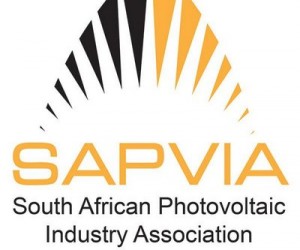SAPVIA welcomes the long-awaited draft Integrated Resource Plan based on rational energy planning providing a solid foundation to a sustainable future. This was finally approved by Parliament on the 22nd August 2018. On the 27th August 2018 the Minister of Energy, Mr. Jeff Radebe released the Plan for public review and commentary. It is important to note that we are currently in an energy transition and the rational energy plan will be the cornerstone of its success, however the IRP 2018 in its draft format has failed to address the current transition by delaying this to the medium term.
SAPVIA, however is grateful to see the least cost energy mix being a crucial component of the revised IRP, especially given the prior consultation the Department of Energy did to develop and solicit input assumptions to the IRP 2018. Solar PV, wind and natural gas are indeed the cheapest viable energy sources that can be used to power South Africa’s energy demands.
The following elements of the IRP 2018 however cannot go without specific mention and commentary;
- The Minister made specific mention that the IRP 2018 is published with the understanding of a “just transition’ towards responding to a changing electricity industry landscapes. The just transition should be holistic in nature to factor in all other critical issues faced by the electricity/ power generation industry such as accurate summation of jobs that the industry will generate for ordinary South Africans.
- The IRP 2018 does not make any specific mention of the round 5 bid window of the IPP procurement initiatives, yet the Minister of Energy through the Department of Energy had promulgated this round of procurement through an official determination.
- The IRP 2018 makes no specific mention of the Smalls Programme, that was setup and preferred bidders announced. Clarity on the way forward of these projects needs to be prioritized.
- The Small-Scale Embedded Generation market in the form of facilities such as rooftop-PV installations and the growth in demand for LPG gas for cooking rightfully deserve a specific mention and quantification. This is important because the growth of these sectors have spiked significantly over the years and therefore it becomes increasingly important to accurately weigh this growth against the projected electricity demand. We believe that the 200 MW allocation is insufficient to address the growing needs of this market segment.
- The IRP 2018 made a specific mention of the consistent annual procurement of new additional capacity from various energy sources in the energy mix. However, in terms of Table 7 of the Integrated Resource Plan there seems to be a lag period from 2022- 2025 where the committed Solar PV capacity ends and the new additional capacity will be procured. This lag period of about 3 years doesn’t bolster well for the Solar PV industry and will not do justice to the consistent growth required for the industry to support job creation and local participation in South Africa.
- The IRP 2018 is clear in the separation of the decommissioning of Eskom’s Coal Plants and the new build programme. The IRP 2018 therefore provides justification and quantification as to how the decommissioning of Eskom’s current Coal plants will impact the energy demand going forward as this could have an impact in terms of the planned capacity to procure in terms of the new energy mix.
What is particularly pleasing to SAPVIA, however, is to see the extent to which the plan provides for a more pragmatic scenarios-based planning approach with a particular focus on critical issues such as; the carbon dioxide emissions constraint and the electricity demand scenario which is crucial for justifying further procurement of energy from various sources.
SAPVIA is confident that Renewables and solar PV specifically, provide for a sustainable energy source when looking at some of the above-mentioned scenarios, which is why SAPVIA also supports the effort by government to test and consider imposing an annual build limits in terms of renewables on the provision that the planned total installed capacity leading up to the period of 2030 is not impacted.
As an interested party, SAPVIA will critically assess the IRP 2018 through engagement with relevant stakeholders and provide commentary accordingly within the proposed 60 day period provided for by the Department of Energy.










